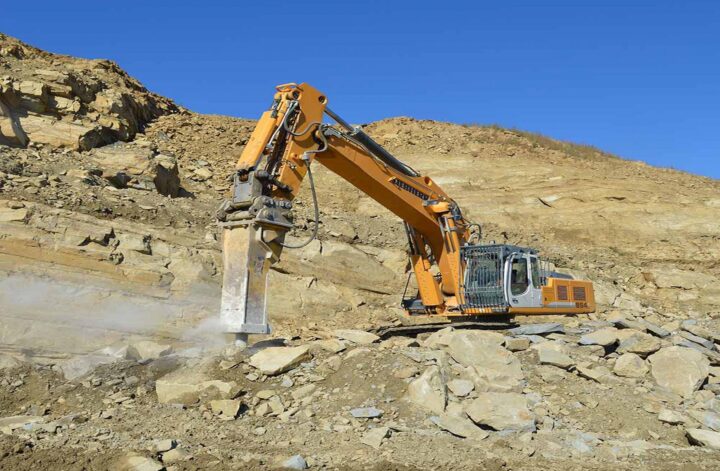If you’ve ever wondered how to unleash the power of small range breakers to conquer rocks and concrete, you’re in the right place. These mighty machines may be small, but they pack a punch that can make any demolition or excavation task a breeze. So, let’s roll up our sleeves and dive into this friendly guide on using small-range breakers like a pro!
Safety First: Gear Up
Before embarking on your rock-breaking adventure, remember that safety is paramount. Remember to use essential personal protective equipment (PPE), such as a hard hat, safety goggles, gloves, and sturdy work boots. Secure any loose clothing, and ensure you’re ready to take on the challenge with the utmost safety.
Inspect the Small Range Breaker
Start by giving your small range breaker a quick once-over. Check for any visible damage or loose components. Ensure that the breaker is properly attached to the carrier, whether it’s an excavator, skid-steer loader, or backhoe. Remember to verify that the hydraulic hoses are connected securely and that there are no leaks.
Familiarise Yourself with the Controls
Now that your small range breaker is ready familiarise yourself with the controls. Most breakers have straightforward controls, including an on/off switch and a hydraulic flow control knob. Get comfortable with these controls and understand how to adjust the flow rate, which affects the breaker’s impact force.
Choose the Right Attachment
Small range breakers come with various attachments, such as chisels, moil points, and blunt tools. Select the appropriate attachment based on the material you’ll be breaking. A moil point may work best for concrete, while a chisel could be more suitable for rocks. Remember, choosing the right tool ensures optimal performance and efficiency.
Positioning is Key
Now comes the moment of truth! Position the breaker’s attachment correctly over the area you want to break. Make sure it’s at the right angle and aligned with the surface. Accuracy is crucial here to avoid any unnecessary damage or inefficient breaking.
Start Slow and Steady
Once you’re ready, turn on the hydraulic flow and start the breaker at a slow pace. Gradually increase the impact force until you find the right speed for the job. Remember, steady and controlled movements are more effective than rushing in with full force.
Master the Art of Breaking
As you get the hang of using the small range breaker, you’ll discover it’s all about timing and precision. Let the breaker work for you by allowing it to penetrate the material gradually. Avoid excessive force or continuously pounding the same spot, as it can lead to inefficiency and increased wear on the breaker.
Handle Different Materials
Small-range breakers excel at handling various materials, from concrete and asphalt to rocks and hard surfaces. However, remember that different materials require different breaking techniques. For instance, with concrete, start at the edges and work inward, while rocks may require a more strategic approach to target natural breaking points.
Cool Down and Maintain
Once you’ve successfully conquered the rocks or concrete, it’s time to give your small range breaker some TLC. Let it cool down after intensive use, and inspect it for any signs of wear or damage. Regular maintenance ensures your breaker’s longevity and peak performance, so take advantage of this step.
Conclusion
You’ve just unlocked the secrets of using small-range hydraulic breakers like a seasoned pro! These incredible machines may be small but they pack a powerful punch that can transform any demolition or excavation project. With safety as your trusty sidekick and precision as your guide, these breakers will help you conquer rocks and concrete like a true construction wizard.



